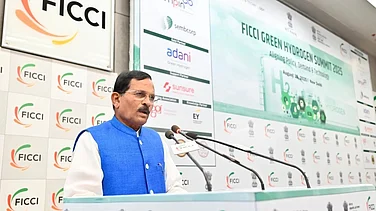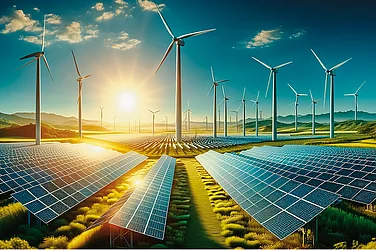The assumption that economic growth must come at the cost of the environment is no longer viable. Today, that trade-off is being dismantled by new models of development. These models are grounded in digital innovation, operational efficiency, and a growing awareness that long-term business success depends on ecological resilience. Businesses, policymakers, and consumers are reshaping the principles of prosperity. With the right intent and tools, growth can be achieved while protecting the resources that sustain it.
Ecommerce as a catalyst for sustainable growth
Ecommerce plays an important role in building more efficient economies. By integrating data, logistics, and user behaviour in real-time, ecommerce platforms improve operations across the value chain, cutting waste and emissions while meeting customer demand. Packaging design and inventory forecasting have become critical levers. Automated box-sizing reduces excess material. Corrugated fillers replace plastic wraps, and recyclable materials are increasingly standard. These changes reduce material use, shipping weight, and emissions, along with reduced material & shipping costs. Data-led inventory models help align demand with availability. Overstocking is reduced, markdown cycles are fewer, and product expiry is minimised. Better supply chain planning supports more efficient growth.
Circularity and climate-smart commerce
Circular models help extend product life and retain resource value. According to the Ellen MacArthur Foundation, applying circularity in five key sectors could cut global CO₂ emissions by 9.3 billion tonnes by 2050. Ecommerce platforms can support this shift by enabling refurbished product sales, offering repair services, and building reverse logistics systems. These systems make it easier to collect and recirculate goods. As more customers seek non-linear options like rentals and second-life products, digital commerce can integrate responsible consumption into the standard shopping experience.
Energy efficiency as a strategic enabler
Energy efficiency offers a practical way to reduce environmental impact and improve operational performance. In India, the success of the The Perform, Achieve and Trade (PAT) scheme clearly underpins the efficacy of energy efficiency interventions. The scheme has delivered annual energy savings worth ₹57,000 crore and helped avoid 110 million tons of CO₂ emissions. In ecommerce operations, energy efficiency involves updating warehouse power systems, optimising cooling and lighting, and improving last-mile delivery routes. Digital infrastructure also contributes. Data centers and platform services can be tuned to minimise energy draw. These measures reduce emissions and lower long-term operating costs. They also support more reliable delivery and enhance overall customer satisfaction.
Packaging innovation as a sustainability driver
Packaging remains one of the most visible sources of resource consumption. Reducing material weight and resizing dimensions helps limit environmental impact across the supply chain. Many ecommerce operations have moved toward using shredded cartons in place of bubble wrap, paper-based tapes, and mono-material packaging to simplify disposal and recycling. Standardising dimensions and coordinating packaging design with logistics supports a more consistent and efficient system. Reusable shipper trials and bulk packaging pilots are also helping extend material life and lower waste generation. These updates support both environmental goals and operational discipline. Circularity models like bringing back waste and recycling it into fresh packaging improves resource efficiency and of course costs!
Enabling a regenerative ecosystem through collaboration
Collaboration between sectors is essential to support sustainable growth. The Government has been helping by clarifying environmental regulations, investing in infrastructure, and offering incentives for clean technology adoption. Businesses contribute by embedding sustainability into core strategy, supply chains, and governance. Investor expectations are also evolving, with ESG metrics influencing capital decisions and long-term planning. When the public and private sectors work in alignment, environmental solutions can scale economically & hence faster and more equitably.
A leadership moment for ecommerce
The ecommerce sector is already advancing in areas like electric fleet integration, data-led logistics, and responsible packaging. These developments are now part of standard operations for many players. Supply chains are becoming more transparent. Inventory decisions are better informed by data. Packaging is evolving with new materials and design standards. These practices are supporting more climate-aware operations.
Ecommerce has also brought market access & visibility to sustainable products and has led to the birth & scale up of many sustainable brands, clearly establishing how sustainability of the products is one of the top considerations for customers looking to make a purchase.
Ecommerce is in a position to show how scalable infrastructure, and sustainable practices can move together, driven by a strong consumer demand
The path forward requires intent, investment, and collaboration
Just like how business operations impact the planet, the reverse is of course also true. Growth and environmental responsibility are deeply linked. When businesses operate with ecological balance in mind, they are better prepared for disruption, policy shifts, and changing consumer expectations. With clear goals, operational investment, and the right partnerships, sustainable economic growth is possible. Efficiency, circularity, and regeneration provide a foundation that supports long-term value creation.
This is a period that calls for deeper integration of climate priorities into how we define success. By aligning growth with resilience, and ambition with accountability, we can shape an economy that thrives within its means and delivers shared value. The momentum is real. With continued intent and collaboration, we have every reason to believe the future can be both prosperous and sustainable.
(The author is the Head of Sustainability at Flipkart)

























